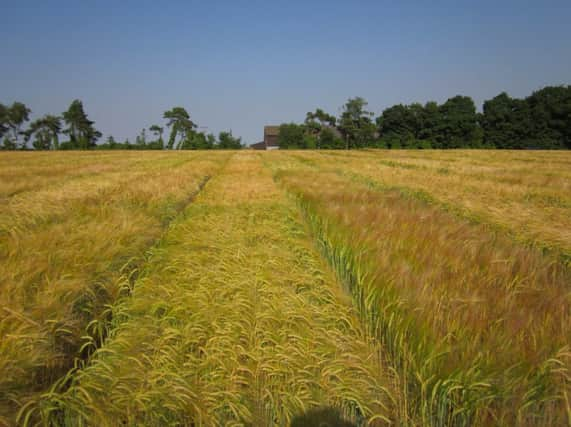Pick’n’mix approach reaps best farming results


We have high expectations from our farming systems – we want them to produce high quality and affordable locally-grown food with minimal chemical additions, in pleasant rural landscapes that support wildlife, clean air and water, and… the list goes on. But before we ask farmers to attempt to satisfy such complex and frequently conflicting demands, we should ask ourselves: does our current approach to farming allow us to achieve these wishes?
In the past few decades, crop breeders have been very successful in producing better performing crop varieties. These can achieve high yields in optimal conditions. But conditions are rarely optimal, resulting in a “yield gap”. So how do we increase food production to meet the demands of a growing population while also reducing fertiliser and pesticide use, protecting biodiversity and safeguarding the environment? This is a main line of research at the James Hutton Institute.
Advertisement
Hide AdAdvertisement
Hide AdCertainly crop breeding will remain an important aspect of the solution to this question. But perhaps we should also consider what type of crop is fit-for-purpose for more efficient and sustainable farming. Modern-crop varieties are often highly sensitive to variable soils, changing pest and disease pressures and adverse weather. Rather than see this as a weakness, perhaps crops can be designed to take advantage of variability?
An alternative approach is growing crops as mixtures, as opposed to the usual practice of growing just a single crop variety. For example, farmers could grow a mixture of different barley varieties in the same field, or a mixture of crop species, such as barley and peas. Growing crop mixtures fundamentally challenges the assumptions that crop uniformity and purity are always necessary, and it has many advantages.
For example in meadows and woodlands, it has long been known that increasing plant species diversity can increase plant growth while regulating pest outbreaks. At the Institute, we are applying these ideas to modern crop production, by growing mixtures to increase crop diversity and understanding how this can increase yield, overcome variability in soils, and suppress weeds, pests and diseases.
Growing crop mixtures could address a further challenge – how to produce more plant sources of protein, particularly legumes, for human and animal consumption. Legumes such as peas and beans, are a good source of dietary protein due to their ability to convert nitrogen from the atmosphere into nitrogen compounds for plant growth. This nitrogen “fixing” is mimicked by fertiliser firms producing mineral nitrogen fertilisers but with greater costs and energy consumption.
Unfortunately, legume cropping in Europe is often unprofitable for farmers due to pest and disease problems and the ready availability of legume imports from overseas. Growing legumes in crop mixtures could alleviate pest and disease problems, as well as allowing the crop to grow more efficiently, requiring less fertiliser to produce the same amount of yield.
Although cultivation of crop mixtures is not new in itself, it is only practiced at a small scale in western agriculture, largely because of the demands of crop processing industries and the practical challenges of growing and harvesting mixtures. Crop processors demand uniformity from crops but in fact they cope with variation in quality often without realising it.
Modern crop varieties, however, have not been bred with crop mixtures in mind. Crop mixtures could be grown more widely if mixture-specific varieties were developed. The challenge for crop scientists is to define the ideal characteristics of crops that lead to improved yield and quality when grown in mixtures, with minimal environmental harm and losses to disease, pests and weeds.
Growers are likely to adopt crop mixtures if economic benefits are proved and practical support tools are developed. We also need to define the best sowing arrangement of mixture components in a field, and make the necessary changes to farm equipment and chemical additions to aid the farming of mixtures. Growing crop mixtures could also help us achieve other targets on our wish-list for farming. Conserving biodiversity is increasingly demanded from our farmed landscapes, and is usually provided by uncropped areas such as field margins and pockets of woodland. But the crop itself can add to this biodiversity – for example, insect pollinators and predators of crop pests often benefit from the increased plant diversity of crop mixtures.
Advertisement
Hide AdAdvertisement
Hide AdEmbracing diversity by growing mixtures that produce high yields and crop quality along with added environmental benefits could provide a much-needed boost for sustainable farming.
• Professor Adrian Newton is cereal pathologist at the James Hutton Institute, and worked on this article with Dr Alison Karley, a research leader in agroecology. The James Hutton Institute is a world-leading scientific organisation that researches crops, land, water and the environment: www.hutton.ac.uk
SEE ALSO